Transgressions Art Journal is proud to present our first ever feature of a mixed media project!
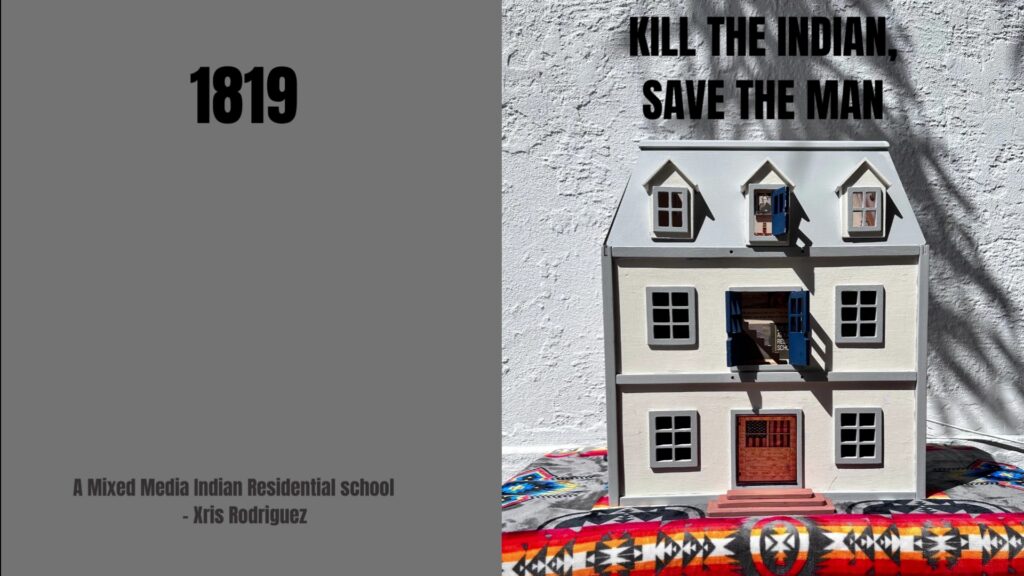
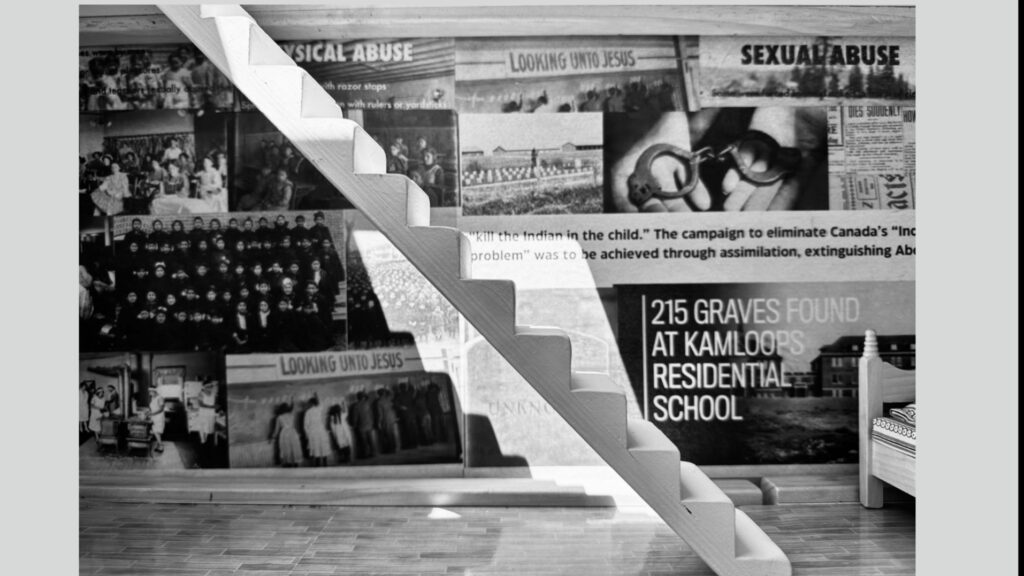
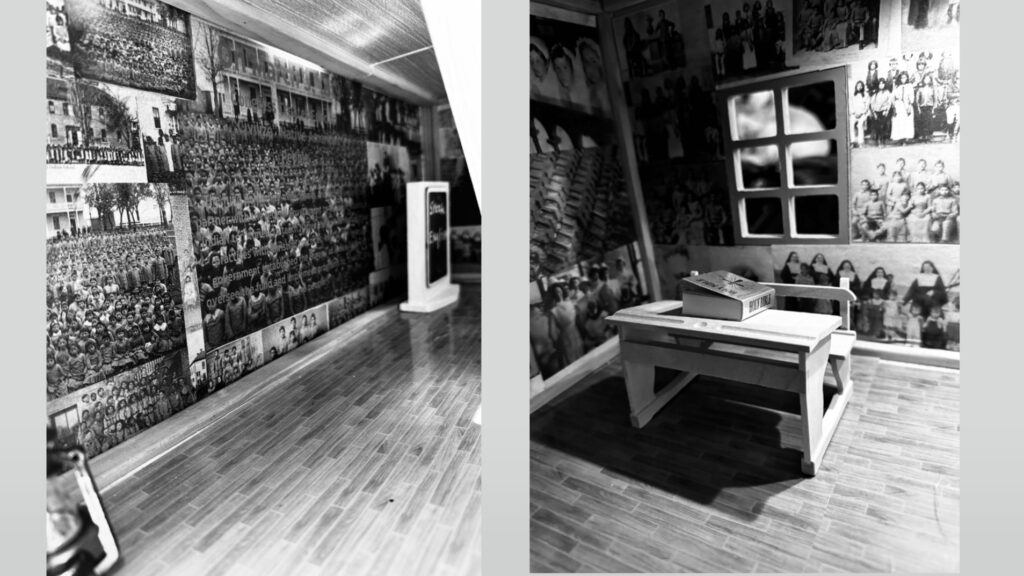
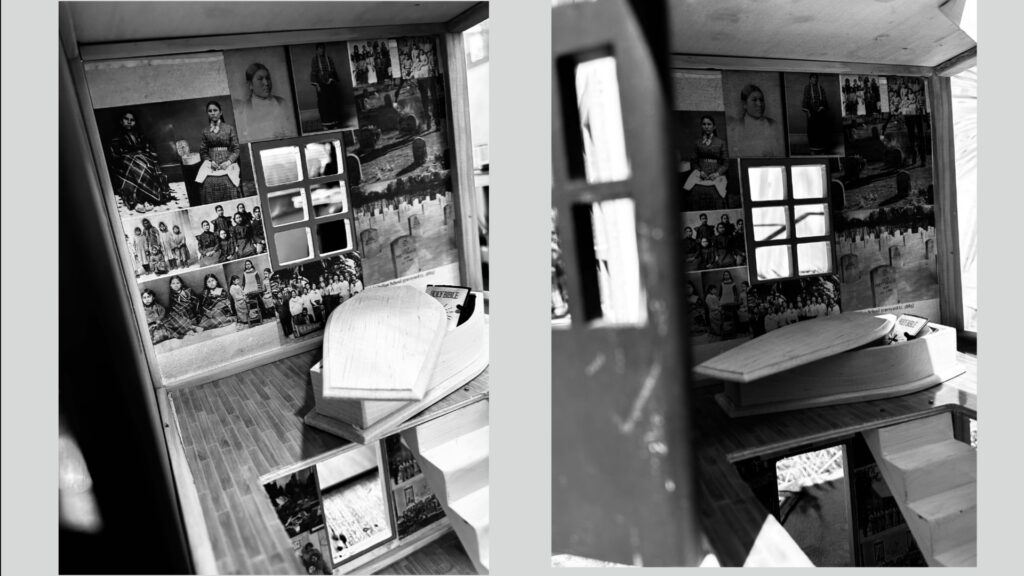
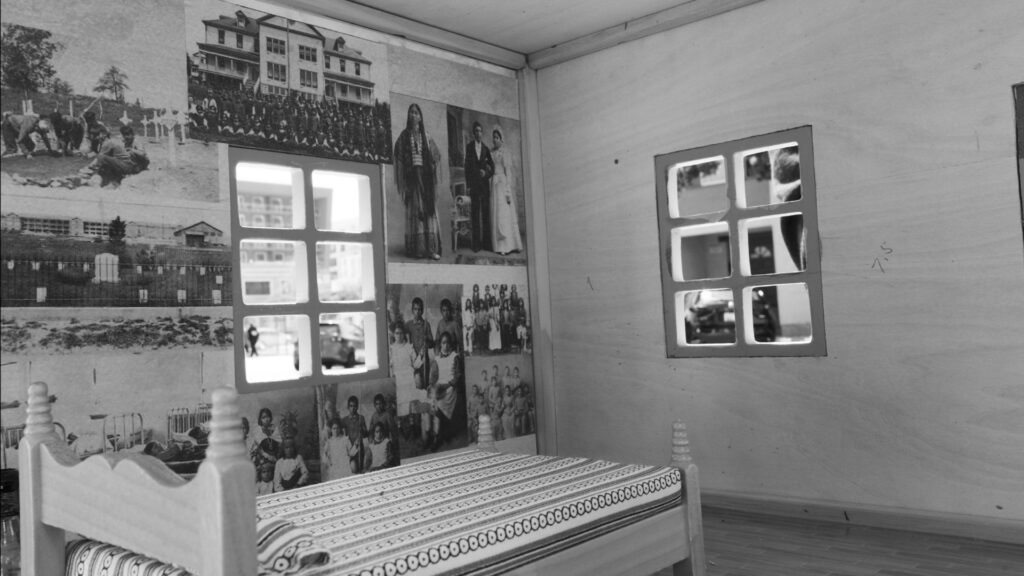


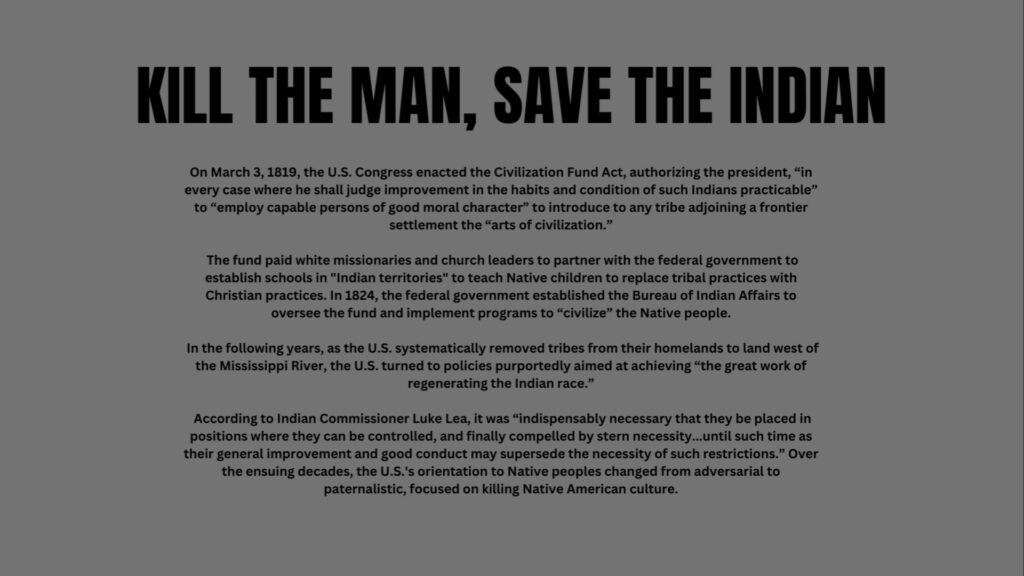
About the Artist
Xris Rodriguez he/him
insta: @xris_512

The History + Research category is what started this whole thing. If you’re curious about trans and gender expansive people in history, this is the place to look.
Transgressions Art Journal is proud to present our first ever feature of a mixed media project!








Xris Rodriguez he/him
insta: @xris_512

Rupert Raj’s story is an interesting look into a pivotal time in the history of medical transition. Raj was born in 1952 and began pursuing medical transition in 1971. Because he was only 19 years old at the time, New York State required written consent from an older family member to obtain an appointment with an endocrinologist in order to receive hormone therapy. In the 1970s there was an extremely small body of scientific work on the trans experience, and even less understanding of trans people’s specific needs than there is today. During this time, trans people were also often excluded from LGB action groups, so a few trans and gender expansive people started organizing their own political action groups.
Raj participated in this wave of community action throughout college, and in January 1978, he started an organization for trans people (including trans men and women, as well as cross-dressers), called the Foundation for the Advancement of Canadian Transsexuals (FACT). During his time with FACT, Rupert Raj edited and published the foundation’s newsletter. This contained much needed information on transgender resources and included lists of books and articles relevant to transgender people, along with tons of other information that was otherwise very difficult to source. Raj was involved with this organization until 1981, when he chose to focus on serving the unique needs of trans men.

In 1982, Raj founded the bi-monthly magazine Metamorphosis, with which he hoped to serve as something of an information broker between the trans community and the greater scientific community. The magazine aimed to provide information on various aspects of being a trans man, including clinical research, hormones, surgery, tips to effectively passing as a man in public, and legal reform for trans people. There was also some levity in the form of jokes and cartoons, and the subscription even included 3 business card sized ads for subscribers free of charge.
Metamorphosis reached an international audience, at one time having subscribers from as far away as Great Britain, and New Zealand. In 1988, Raj decided to end publication of the magazine due to extreme burnout.
The Digital Transgender Archive, and Canada’s The ArQuives, have graciously preserved digital copies of what appears to be the entire run of Metamorphosis, which you can read here. I am planning on reading these in their entirety and writing a deep dive on this awesome piece of trans masculine history. Should you choose to read these, I would caution you that the language and understanding around trans people and our experiences has changed quite a bit since this time, and these should be read with this context in mind.
After shuttering the magazine, Rupert took a 9-year break from public advocacy to heal. At one point he commented, “No matter how important the work you’re doing may be, sometimes you need a decade off from being a trans person in the public eye.”
Raj re-entered the public stage in 2002 when he founded RR Consulting, continuing his work as an educating consultant, psychotherapist, gender specialist, and trans-positive professional trainer.
In 2017, Rupert Raj made available the text of his international trans poetry anthology “Of Souls & Roles, Of Sex & Gender: A Treasury of Transsexual, Transgenderist & Transvestic Verse from 1967 to 1991.” The volume includes nearly 400 poems penned by 169 trans people throughout Canada, the US, the UK, Australia and New Zealand.
His sociohistorical memoir, “Dancing the Dialectic: True Tales of a Transgender Trailblazer” was first published in 2017; a second edition of which was published in 2020.
Rupert Raj continues his work as an advocate for transgender people, and a community educator to this day. Most recently in October of 2022, Fantasia Fair recognized him with their 2022 Transgender Pioneer Award. This is the longest standing award that solely recognizes trans people. Established in 2002, this award honors the lifetime achievements of trans people who have made the world a safer place for people like us.

If you would like to learn more about Rupert Raj and his work, you can follow this link. And if you enjoyed this look into the life a trans activist, you may enjoy looking into the lives of other LGBT+ Figures in History.

Bobbie Lea Bennett and her contribution to history may seem like a small one on it’s face, but it was in fact, monumental. She is best remembered for forcing the United States Medicare system to consider covering gender affirming surgeries.
As opposed to previous (unsuccessful) attempts to obtain Medicare coverage for gender affirmation surgeries, Bobbie Lea occupied the uniquely advantageous position of already being a Medicare recipient. She did not need to build the case that transsexuality was itself a disability. This forced Medicare to address the singular issue of gender affirming surgeries.
In 1978, after mobilizing media interest in disability rights in her favor, she literally pushed her case into the faces of government administrators. She set off on a cross country road trip from San Diego to the Baltimore, Maryland offices of Thomas M. Tierney, the director of Medicare at the time. During the meeting, Tierney assured Bobbie Lea that a committee was assessing her case. Three days after this meeting, Bennett received a check in the mail. Medicare denied that this check was to cover Bennett’s surgery, instead claiming that they were simply correcting an error.
Bobbie Lea Bennett is best remembered for this particular instance of activism but she dedicated her life to the pursuit of liberation. In 1985, she founded the St. Tammany Parish Organization for the Handicapped, which served the interests of wheelchair users, and other disabled persons that lived within St. Tammany Parish, Louisiana. This organization has since been dissolved.
We don’t have much more in the way of facts about Bobbie Lea’s life, but she is remembered as a beloved wife, and mother to 2 children.
Complement this with a look into the life of another often overlooked activist, Ernestine Eckstein, or the great Miss Major Griffin-Gracy.

Finding reliable information on the trans experience is tough these days. There is so much anti-transgender fear mongering and manipulation of science going on online.
I ran up against this issue pretty recently when I was trying to source some informative books, more for my own edification than anything else. I’m the first to admit that beyond my own personal experience I do not have a lot of history with trans people. I have one trans friend, which I have come to find is kind of a rare thing, even among other trans people.
Ideally this guide will be found by people at all stages of their gender journey, as I believe everyone has something to learn. But, I do hope that this guide finds people who have thus far only interacted with people who are cisgender, as I feel like this is the kind of thing that I could have used when I was that person.
When I was on the hunt to find resources to better communicate my experience to the people who care about me, I wanted a one stop resource to point people to if they were interested in learning more about trans people. So, let’s start with some generally reliable sources of information on the basics of what transness is, how people come to understand that they are trans, and how varied this experience truly is.
TransLash Media – An excellent resource for timely information and hard hitting investigative journalism on topics that are relevant to everyone.
them.us – I recently found this blog to be a great resource for news and informative cultural articles.
TransJoy Blog – I can’t forget to recommend my own site, which is written entirely by trans people, about our own experiences. I also have to recommend the collection of the Weekly Shortcut Newsletter, which recently sent out its last issue. Simply enter your name and email address here, and you can get all ten issues of the Weekly Shortcut Newsletter right to your inbox!
Gender Reveal – Podcast hosted by the incomparable Tuck Woodstock. Currently on it’s 7th season, this is the perfect time to binge all 6 seasons of this great podcast that uses interviews to explore what exactly gender is.
TransLash Podcast – Hosted by Emmy and Peabody award-winning journalist Imara Jones, this podcast tells trans stories to save trans lives. They promote trans owned businesses and have a great Instagram page which I think everyone should follow.
CopsHateMoe – Newer channel from a great non-binary creator. Super informed take on the goings on in the greater trans community online.
Ashton Daniel – This is a recent find. Ashton has been making videos online for years, but really started gaining traction on the site in the past year or two. They make great videos about a range of topics from his experiences working at a transphobic sleep-away camp this past summer, to stellar book reviews.
Jammidodger – Long time YouTuber that produces funny, wholesome, and informative content.
Ty Turner – Ty produces very funny, and interesting content from his perspective as a trans man living in conservative America.
Kat Blaque – Another creator who offers very salient points on everything from sex and body positivity to pop culture.
Milo Stewart – This particular creator’s videos have deeply informed my understanding of nonbinary identities. I will be the first to admit that I did not understand the concept of being nonbinary until I started watching this wonderful person’s content. They have an excellent video series on how using they/them pronouns for people who do not use them can be misgendering. Absolutely amazing stuff that I wish would be shown in every workplace, it is that informative and helpful.
Jessie Gender – Super well researched, long form videos that offer clarity and nuance to issues and debates that are often difficult to understand and engage with respectfully. Fantastic content, well worth watching all the way to the end.
ContraPoints – Great long form content. Very informed perspective on issues ranging from politics to bigotry.
There are, of course, more YouTubers out there and tons of great content, but I am only offering a jumping off point.
Scientific American (in general, a great source of information)
Science Daily (also a great resource for the latest in research news)
Transgender History by Susan Stryker
The Queer Bible edited by Jack Guinness
Miss Major Speaks by Miss Major (which you can preorder here)
There Are Trans People Here by H. Melt
Fierce Femmes and Notorious Liars by Kai Cheng Thom
Gender Dysphoria Bible – This can sound a bit intimidating to people early on in their transition, at least it was for me. But the minute I took the plunge I found a treasure trove of digestible and compassionate information on the multitude of ways that dysphoria can be present in your life. I was finally able to gain some insight into why I have been going through such a tough time.
A good place to start for readers of all ages is this list.
1. Find the citations. Independently verify if possible. – If you’re reading or watching something that is making statistical or scientific claims there should be a section below the article or video that contains the source of these statistics. If this is not present, the article or video is not a reliable source, as reliable sources are able to be independently verified!
2. Is this information up to date? – This has been important in understanding information on the trans experience as a whole. While there is not nearly enough research on trans and gender non-conforming individuals, what has been published just these past 2 years has contributed greatly to building a base of scientific representation of the trans community. A lot of people like to claim there is no scientific basis for the trans experience, when in fact the scientific understanding of gender as a binary has been under scrutiny for years and the most recent research does, in fact, support the biological existence of trans people. (Theisen et al.)
I would caution you to not focus too much energy trying to understand this type of information on the trans experience. Proving the “biological existence” of a population that we know has existed since people have existed is not generally important in understanding the lived experiences of this population.
3. Determine purpose and reliability of information. – Some questions to assess the purpose and reliability of an article:
– For whom has this article been created? Scholars, scientists, or for the general public?
– What is the purpose of this article? To provide information? To argue a point? To convince the reader to support a political position? All of these purposes would result in a different article from the same source information, which is why the purpose of a piece is an important factor to consider.
– What institution (company, government, university, etc.) supports this information? A news organization is NOT itself, alone, a reliable institution. All news articles should have reliable and properly cited source materials.
-If it is an institution, have you heard of it before? Can you find more information about it?
– Is there a non-Web equivalent of this material that would provide a way of verifying its legitimacy i.e. a regularly published in print journal?
Skim through the points in this tutorial from Georgetown University on evaluating Internet sources.
I feel I should include a good mental health and suicide hotline from the Trevor Project: 1-866-488-7386. They have a lot of experience with LGBTQ+ people and have proven helpful to me personally in the past. The trans experience does not preclude suicidality, but they do often go hand in hand, especially in people under 25, for whom this hotline was specifically made.
This is something I feel that people who love trans people don’t understand. So, if you are a parent, partner, or friend of a trans person, consider how the news of another murdered trans person affects the person you love.
Every few days there are reports of another murdered trans person and it does affect us. It’s a constant reminder that the world as a whole is not for us, because no matter how supportive the people in our lives are, there are plenty of people who would like us dead. Consider using the above hotline, or joining a group for friends and family of transgender people if you are unsure how to approach these types of conversations.
Ultimately, I hope this article can function as a jumping off point for deeper research into being transgender and understanding LGBTQ+ peoples lived experiences a little better. And remember, the best source of information on the trans experience is trans people themselves. Speak to trans people, start conversations with us about our experiences, just be sure to do so in a respectful and earnest manner.
And if someone tells you that they are not up for discussing this type of stuff, be respectful of that. Trans people already deal with a lot of rude and invasive questions, and are generally forced to advocate for ourselves and other trans people on the daily. Do your own research to get the broad strokes, and then go to your trans friends to learn about the little things if you are still genuinely curious. Be sure to let me know what else I should include in the comments below!
Complement this deep dive into queerness with another dive into queer internet history.
Citations
Medical College of Georgia at Augusta University. “Gene variants provide insight into brain, body incongruence in transgender.” ScienceDaily. ScienceDaily, 5 February 2020. <www.sciencedaily.com/releases/2020/02/200205084203.htm>.
Journal reference for above article:
J. Graham Theisen, Viji Sundaram, Mary S. Filchak, Lynn P. Chorich, Megan E. Sullivan, James Knight, Hyung-Goo Kim, Lawrence C. Layman. The Use of Whole Exome Sequencing in a Cohort of Transgender Individuals to Identify Rare Genetic Variants. Scientific Reports, 2019; 9 (1) DOI: 10.1038/s41598-019-53500-y

Thomas(ine) Hall has a fascinating story. A lot of historical accounts still require more strict verification, however, it is generally accepted that Thomas(ine) was born Thomasine Hall sometime around 1603 in Newcastle upon Thyne, England. According to their own account, though they were born intersex, Thomasine was raised as a girl and trained in traditional women’s crafts such as lace making, and needlework.
The first recorded instance of Thomas(ine) adopting traditionally male dress, name, and pronouns was when they cut their hair, and “changed into the fashion of a man” in order to join a brother in the military. Upon returning to England from the service, Thomas(ine) again resumed the lifestyle of a woman.
In or around the year 1627, Hall took an opportunity to resettle in Jamestown, Virginia, dressed as a male indentured servant, ultimately moving to a smaller settlement on the James River. At the time, there was likely more work available on tobacco plantations for people who were coded as male. However, it appears that Hall remained fluid in their gender expression by occasionally being seen about in women’s attire. In explanation of this particular “quirk”, Thomas(ine) Hall offered what I consider to be one of the best historical quotes ever: “I goe in womans apparel to get a bitt for my Catt”. This has been interpreted as meaning that women’s attire allowed Hall to enjoy sexual relations with people with penises.

Eventually, this flaunting of current social norms caught up with Hall. They were accused of having had sexual relations with a maid. Apparently, the gender of the offender became a matter of criminal responsibility. The legal system of the time stated that if Hall was a man, they could then be charged for sexual misconduct with a servant, but women were deemed incapable of committing this particular type of crime. The “criminal investigation” into this matter consisted of the townspeople taking it upon themselves to examine Hall’s anatomy without their consent, possibly while they were sleeping. Despite a prominent local man determining that Hall was not a proper man, this did nothing to change the townspeople’s desire for punishment, and led the villagers to take the case to the Quarter Court of Jamestown. After hearing from several witnesses, as well as from Hall, the court handed down a punishment inconsistent with legal precedent at the time. The court ruled that Hall was of a “dual nature”, and where usually these offenders were made to choose one gender, Hall was punished in a rather unusual manner.
The court determined that Hall would go by the name Thomas(ine) and “goe clothed in man’s apparell, only his head to bee attired in a coyfe and croscloth with an apron before him”. Meaning that Hall was made to wear both men’s and women’s clothing simultaneously, essentially branding them a permanent outcast.
Not much is known about this person’s life after this controversy, but I like to believe that they hit the road and continued to get a bit for their cat.
Complement this with the curious story of The Public Universal Friend, or an argument for the joys of not passing.
Citations:
https://wams.nyhistory.org/early-encounters/english-colonies/thomas-ine-hall/ – CW: If you do choose to look at this source, it is rife with cisnormativity. The author consistently uses either “she/her” or “he/him” pronouns (when we know that this person’s identity was more fluid than these terms), and describes intersex genitalia in a rather offensive manner.

I am always fascinated by stories of trans survival and the ways in which trans and gender nonconforming people attempt to explain their experiences with gender to cis people. There’s a consensus among trans people that cisgender people generally never even bother to question their gender, or how they know that they are their gender. They just don’t put much thought into it. This gives me a sense of kinship with other sexual minorities. Straight people do not generally put much thought into their sexuality, because they have the privilege of remaining ignorant. The same appears to be the case for cis people.
Never having bothered to question one’s gender means that you aren’t even ready for Gender 101, you need the remedial course. You need to understand just how divorced the concepts of sex and gender really are. You need to understand that both sex and gender are social constructs. Even though they may serve some useful purposes, they are completely made up, and both are more of a mass system of classification and communication than any kind of quality inherent to one’s personhood.
The need for educating cis people on these particular facts is made even more apparent when one becomes aware of the old trans survival strategy of “spontaneous transition”. You may have seen a story about this floating around social media. Essentially, in the past, some trans people reportedly explained their transition to the people around them, and greater society, by claiming that they suffered from a pathological condition that resulted in their “changing sexes”. They could have said that they had something like a tumor, or just a general medical condition that caused “this most wonderful transformation”. (“A Man-Woman – Digital Transgender Archive”) But before we get to the specifics of this strategy, let’s take a look at some older representations of gender queerness.
Trans people have been here since there have been people, thus the means to trans survival have existed since people have existed. I could not find ancient personal accounts of trans survival, but representations of the concept of “changing gender” are found in some of the most ancient stories and traditions. People who do not strictly adhere to a single, fixed, gender have historically been represented as gods. One of the most notorious examples of this in Western culture is Loki from Norse mythology.
He’s been a fly, he’s been a falcon, he’s accidentally conceived children by eating a burnt giantess’ heart. In a particularly memorable incident, he turns himself into a mare in order to seduce a horse and save the rest of the gods (long story). There’s also a bit in ‘Thrym’s Poem’ in which Thor refuses to disguise himself as Freyja because everyone will think he’s unmanly and that would be Terrible, and Loki replies with, essentially, ‘You’d rather the giants invade Asgard than have to wear a dress? Seriously?’
An Examination of Gender in Viking Age Scandinavia
I feel I should include something of a disclaimer here. It should come as no surprise that the word transgender, which was coined in an academic paper in 1965, is a modern descriptor applied to people who understand their gender to be different from the sex they were assigned at birth. This definition is itself a modern one, as a sex assignment at birth that is registered and recognized with some kind of governing authority seems to have shown up as late at 1811, which is when the Dutch started registering a baby’s sex along with other identifying information, such as the child’s name. Taken together, we can understand that when looking to the past, we should seek representations of behavior without using modern descriptors as classifying labels.
Understanding that, we can take a look at some Sumerian and Akkadian texts from 4500 years ago that document the existence of gala. These gala were priests who today are understood to have been individuals that identified outside of simple male or female gender identities. Archeologists have also found multiple burial sites of people who were buried with objects typically attributed to “men” or “women” whose anatomy did not match the supposed social status of the objects found.
Archaeologist María Fernanda Ugalde has raised a similar issue in her analysis of over 3,000 clay figures from Ecuador, dating from as early as 3500 B.C. Other combinations of physical and clothing features than the ones fitting Western notions of sex and gender were present in those figurines: For example, breasts were depicted with male dress and a lack of breasts with female dress.
Gabby Omoni Hartemann, Stop Erasing Transgender Stories From History

CW: Transphobia, cisnormativity, and general cis nonsense
Since we have established the ancient existence of trans people, let’s skip way into the future to arrive at the not-so-distant past of 1868. It is here, in a small town called Waterloo, Iowa, where we find an article in a newspaper entitled “A Man-Woman”. Intrigued, we read on to find the story of one Edgar Burnham, as told by some secondhand source, not Mr. Burnham, himself.
The article goes on to tell the story of a man named Powell and his former wife, one Ellen Burnham. Burnham is described as having “taught music, had a large number of pupils, and was very attractive.” Powell and Burnham were married for two years, and had one child together. They lived together until “at the expiration of two years, when about 21 years of age, Mrs. Powell’s voice changed, she grew light whiskers, and gradually changed her sex, developing into a man, in all respects, as if nature, anxious for a freak, had turned a portion of herself wrong side out.”
The story goes on to describe how Edgar took on his name, moved to Chicago, and eventually married a former music student of his. My favorite part of this is the second to the last paragraph, which declares “The former girl is now a man, the former wife is now a husband, the former mother is now a father…Truth is indeed stranger than fiction, and the above simple statement of facts borders so upon the marvellous we could not believe it did we not personally know nearly all the parties.” Despite the extremely cisnormative language, I can recognize that this author seems to have a better grasp on transition than some people in this day and age.
What makes the explanation of a “spontaneous” medical transition due to some mysterious “condition” so unique is that it is such a human explanation. What a human frailty is disease. And to use the perception of it as a means of gaining control over your body is such an inherently trans subversion of the very nature of “illness”. For many, illness can be disabling and overall just a terrible thing to experience. The fact that trans people had to lean into the intractable nature of disease in order to be granted the opportunity to exist as themselves in Western cisgender society is something that I see reflected in the modern day.
I’m sure anyone who has spent time in online trans spaces will recognize the reflex that certain modern trans people have to call their transness a mental illness. It seems to me that trans people who claim their transness to be the result of a mental illness are trying to use the same trans survival strategy as Mr. Burnham to justify their existence to the cis people around them, and thus gain access to much needed resources.
I am not here to disparage those who do feel themselves to be suffering from a mental illness because they are trans. I am not here to pass judgement, only to offer a historical perspective on why some people may feel this way. Trans people have had to use many creative coping strategies to survive, and the medicalization of transition is one of them. I do, however, believe that trans people who have access to modern technology owe it to themselves, and the community as a whole, to grow beyond this explanation of their transness.
I can understand how someone who lives in a violently cisnormative culture would be regularly confronted with the need to justify their existence. But if you have regular, and stable access to the internet, you have regular access to higher quality information on the nature of transness and transition than a simple “you have a mental illness”. Every trans person owes it to themselves to get invested in the conversations that are going on around being a modern trans person. Listening and learning are the best places to start when trying to grow, so I urge you to take it upon yourself to actually talk to trans people, and listen to our podcasts, and read our books, essays, and poetry. We are out here practically screaming to the world what our truths really are and at this point, if you can’t move beyond the thinking from 1868, you have a lot of personal work to do, regardless if you are cis or trans.
If you’ve made it this far you are already well on your way, and I would encourage you to take a deeper look into the nature of trans love, what it means to love your body as a trans person, and facing disillusionment with masculinity.
“A Man-Woman – Digital Transgender Archive.” The Last Sensation, 25 Jan. 1868, www.digitaltransgenderarchive.net/files/g732d9110.
https://www.getrealcambridge.com/2015/03/07/an-examination-of-gender-in-viking-age-scandinavia/

My grandfather died without being able to read.
I would like to tell you the story behind this fact which serves to illustrate an event that had a huge impact on, not only my family, but also, the perspective of a lot lower class white people in Virginia.
My dad’s father only had a 6th or 7th grade education because his school closed to avoid integrating black students. Being extremely poor, and having no relatives in other parts of the state, the only option my grandfather was left with was to go to work. By the time most of the schools reopened, my grandfather had been working for years, leaving him with no time, or incentive, to finish his education.
Put another way, he was one of the earliest victims of the so called “massive resistance” strategy of the Stanley Plan, which was pushed through the Virginia General Assembly in 1956 by a group of white separatists and the governor at the time, Governor Thomas B. Stanley, for whom the bill was named. This bill was a direct refusal by the Virginia government to adhere to the federal mandate to integrate public schools, and prompted many schools to shut their doors rather than allow any student to attend any school.
I did not know my grandfather very well because he died when I was six. Given this, I cannot personally speak to how this lack of education impacted his political or social views. But we can take this one experience as an example of the white elite in Virginia sacrificing all of their sentiments at the twin altars of class and race. They literally used the rule of law to punish all of the poorest people in their community in an effort to enforce the exclusion of Black people.
But what was their explanation for this? The legislators claimed they refused to fund public education in the state “in order to protect the health and welfare of the people”.
Community leaders saw themselves as more civilized and progressive than residents of the Deep South. As Jill Titus writes in Brown’s Battleground: Students, Segregationists, and the Struggle for Justice in Prince Edward County, Virginia, “Virginia’s interpretation of Jim Crow was stifling to black aspirations but nonetheless distinct from the racial code that governed life in the Deep South. The Old Dominion, after all, had been the aristocratic capital of the Old South. White elites wholeheartedly supported segregation and disfranchisement but shunned vigilante violence as a threat to social stability.” [emphasis mine]
Katie June-Friesen, Massive Resistance In a small town

To me, the above quote illustrates the heart of the issue that many in the Virginian, Christian conservative elite have with both Black people and trans people. We “disrupt” the social order simply through our very existence in what they deem to be their spaces. Or what the rest of us call, existing out in public.
Believing the existence of trans people to be a threat to the social order, makes it easy to cast trans people as not real and simply “promoting a divisive ideology”. Which thereby supports the idea of rejecting us from public life because any good, white, Christian Virginian cannot be seen promoting a threat to the social order!
This is also where we see the enduring influence of the antebellum era social code. Every other type of oppression is predicated on maintaining the social class structure that keeps the white elite in place. The elite go so far as to convince poor white people that the system is also beneficial for them by using racist/ableist/transphobic rhetoric to appear “on the same side” as the poor white people they also exploit. Because if there’s a class of people beneath (or opposed to) them, the poor white person gets to feel superior to someone as well, and is therefore promised social mobility by virtue of their whiteness, and ability to provide profit for the white elite through their labor. Whether this social mobility actually materializes is of no consequence. This promise is offered only to appease the poor white worker into not questioning the structure at large or even noticing how the white elite are oppressing them, albeit not in the same manner or to the same degree as everyone who is not white, or unable to work.
The current generation of parents who belong to the white elite do not want their children mingling with people whose existence challenges the established structure in a number of ways. Chief among these challenges to the existing order is the fact that widespread societal acceptance of trans people would, by necessity, undermine the ability of powerful, white men to oppress people on the basis of sex assigned at birth. But that isn’t what these parents are thinking when they are pulling their children from public schools. They believe they are protecting their children, and in a way they are exactly correct. They are preserving the social order from which they have benefitted and from which they expect their children to continue to benefit. This is the exact same sentiment that motivated the school closures of the ’50s, and continues to drive the recent wave of anti-trans hate and racially motivated violence in this country as a whole.
This is not necessarily intended as an “eat the rich” style diatribe. What I hope you take from this is a deeper understanding of the ways in which the economically elite and politically powerful members of this country continue to use racist, ableist, and transphobic systems to empower themselves at the expense of everyone else. Transphobia is just the flavor of the month in Virginia.
Complement your greater understanding of intersectionality with a deeper understanding of people who call themselves “queer by choice”, and learning more about the history and the enduring effects of this “massive resistance” strategy.
https://www.neh.gov/humanities/2013/septemberoctober/feature/massive-resistance-in-small-town
Baker, Robert E. “Legislators Get Stanley School Plan.” The Washington Post. August 28, 1956.



Unless otherwise specified all quotes are from Miss Major’s personal website, which you can find here: missmajor.net
For those of you who aren’t aware of her, Miss Major’s website really says it best: “Miss Major is a Black, transgender activist who has fought for over fifty years for her trans/gender nonconforming community.”
Miss Major Griffin-Gracy was born on October 25, 1940 on Chicago’s South Side, where she participated in the drag scene in her youth. I appreciate that she has pointed out that she and her contemporaries were unaware that they were exploring their personal gender identities through drag, as the current vocabulary around gender identity simply did not exist back then.
[Author’s aside: I grew up in a conservative Christian household from the American South, so this explanation resonated with me on a personal level.]
Miss Major came out as a trans woman in the late 1950s, after which she was ostracized and routinely assaulted by her peers. Through the ensuing years Miss Major was on the ground during the Stonewall Riots, and survived both Dannemora Prison and Bellevue Hospital’s “queen tank.”
These experiences continue to inform her “work to uplift transgender women of color, particularly those who have survived incarceration and police brutality.”
Miss Major’s personal and professional accomplishments are next to innumerable, so I will attempt to portray the highlights:
No amount of explanation or bullet points can accurately convey the impact that the incomparable Miss Major continues to have on the lives of the most marginalized and brutalized members of our society. She continues this valuable work to this day, including the upcoming publication of her autobiography Miss Major Speaks which you can pre-order from Verso Books.

I’ll admit I did not know much about this particular stance from this particular time when I first heard about it. Upon looking through the site, I was pleasantly surprised to find that a lot of the arguments presented there articulate the position of “queer by choice” in a way that somewhat reflects the backbone of arguments being made in the queer community today.
“The reason everyone has the right to be queer is that everyone has the right to control their own mind and body unless it infringes on anyone else’s right to control their own mind and body.”
Gayle madwin
“Self-definition and self-determination are about the many varied decisions that we make to compose and journey toward ourselves… It’s OK if your personal definition is in a constant state of flux as you navigate the world.”
Janet mock
The use of the word “choice” initially struck me as a bit strange, because I remember staunchly advocating the position that homosexuality is not a choice in a sociology course I took in high school. (I felt that I was homosexual at the time, but I now understand that what I was experiencing was being trans). Queerbychoice dot com definitely comes from a perspective of queer sexuality, as the author appears to be a queer cisgender woman, but don’t let that put you off reading. This site contains a wealth of insight into queer life and the queer zeitgeist of the late 1990s and early 2000s, and is a great resource for exploring the idea of choice in depth. It has a list of resources and quotes on queerness, and it has quality answers to some of the arguments that people espouse against choice. The perspectives offered on the implications that declaring you are queer by choice can have, even to this day, is a bit of the site that has aged particularly well.
One of my favorite pages on the site is under the question, “When you say you chose it, do you just mean it’s a product of your social environment?”. This page contains an answer to the question that is one of the few references to trauma that the site contains.
“Of course you could argue that in a case of severe trauma, environment can produce post-traumatic stress syndrome without a person choosing to experience it. But if we’re talking about a healthy person responding in a healthy manner to a healthy social environment, then we’re usually talking about someone who’s making choices in response to that environment.”
Queer By Choice FAQ “When you say ‘chose’ it…”
Upon reflecting on this quote, I realized that I have never been in, seen, or been close with someone from a healthy family environment. I imagine this might contribute to why this thought of “choice” initially struck me as strange. Choice has never been a part of my life, or the lives of literally anyone around me, in a healthy way. Based on this quote above, I am led to think that Gayle has a much more healthy relationship with choice than many people. This may be the reason Gayle found it difficult to “know what it means to be ‘unable to change’…”, in much the same way as I initially did not understand what she meant by choice.
The last quote, and the following quotes are from a conversation between Gayle Madwin and Frank Aqueno: “…when people think that something is not an option it is because they keep questioning incessantly whether it really is one instead of just going with it and TRUSTING that the option is there” – Let’s address this issue of trust by thinking about what these choices represent for some people, and at what age these choices are presented. I will not insult anyone’s intelligence by explaining the collateral damage that can result from expressing your queerness, but I will point out that when it comes to gender queerness many people are forced to make a choice to either explore it, or deny it long before they are confronted with their sexuality.
This is the main reason I think the site falls somewhat short in it’s generalization of it’s arguments to include gender. Gender ups the stakes of one’s choices for almost everyone who wants to explore existences outside of the “norm”. (Here, and throughout, I use the concept of “the norm” to mean the cisgender/heterosexual/white/bourgeois conception of the gender binary that prevails in the majority of mainstream Western culture)
I do not believe you can equate the choices one has around living their sexuality, and living their gender because society has always had much more of a problem with public facing “deviancy” from the established norm. There are so many people that will say things like “I don’t care what you do in private but why do you have to ‘flaunt’ it in public?”. This dichotomy between tacit tolerance of one’s private behavior and the rejection of the public-facing expressions related to these behaviors has plagued every part of the LGBTQ+ community, and thus heavily affected the perceived “choice” one has around being oneself. The thinking behind this statement is what prevented the federal recognition of gay marriage for so long. And it is the same rejection and violence that trans people are still facing today.
Sexual behavior and gendered experiences are heavily related, but I argue that they are functionally different when it comes to this “development of the core” self that Gayle and Frank discuss. I believe the policing and enforcement of gender roles, which are different than the societally prescribed sexual roles, serves as a means of exerting control over the populace in general, in the interest of maintaining certain other societal systems whose frameworks were expressly designed to serve the interests of powerful, white, men. In my experience, this means that the people around you, and society as a whole, has systems in place that work much harder to ensure compliance in this particular aspect of one’s life. I bring this up in the interest of shedding light on a complicating factor to choice that queerbychoice.com does not seem to address in any kind of depth. This complication is the reality that the perception of one’s own freedom heavily influences one’s capacity for choice.
The essence of freedom, and our relationship to it, is the heart of this rhetoric of choice.
When I came out to her, my mother told me “Well, you know it’s always been your choice?”, and I assented vaguely. But in truth, no. I didn’t know that I had a choice. I knew I was never a girl, but I was never told I had the freedom to actively choose the social, public-facing role of manhood. And as for publicly declaring yourself to be anything other than a man or a woman, well, that was just not done, what else could there be? I guess I could have asserted myself, but when you’re a child, your parents and other adults around you determine the limits of your reality, and thus your choices.
Sure I knew what trans people were in a vague sense, and I understood the basics in the abstract by the age of 12 or 13. But no one ever told me that being trans was something that could explain my experience, and I never really saw myself in the limited (and hate-tinged) view of trans people to which I had access. What I am getting at, is that for me, sexual behavior was fairly obvious. However, when I was experimenting with my gender expression and using this to explore my gender as a concept, I was still constantly told that that behavior was ok for “girls”, that all “girls” did this at some point, and “you can be whatever type of woman you are”. Gender was seen as immutable, not as something that can be developed like one’s taste for food.
I’m happy to report that my thinking has evolved beyond this rigidity and I can finally see that, for me, I do have the choice to live as an out and proud trans man. And choosing to live out and proud is freedom. A freedom that deserves to be exercised to the fullest extent it can be. But this change took a ton of personal development, some of which came with age and experience, but the majority of which came from actively choosing to engage in queer media, and open my mind to many other people’s perspectives. So in this aspect, I see the element of choice in the development of my queerness.
After a lot of work to deepen my understanding, I arrived at the conclusion that there is little possible in the way of finding a “rational” explanation for gender, choice or otherwise. I personally think gender can have an essence of innate feeling for many people, and the same goes for sexuality. But even choosing to believe this is a choice isn’t it?
Maybe I feel like there can be something innate and there can be an element of choice because I like to center the idea that every self-conscious being has its own unique perception of it’s existence. I cannot hope to fathom the possibilities for variety that this reality of consciousness provides. Queerbychoice.com has so many examples of people who understand their queerness to be a choice, so who am I to question the personal testimony of so many people? I am only here to hopefully continue this conversation on choice and freedom with the benefit of time and perspective.
If we take the rhetoric of choice to truly be about freedom, we then understand that we need to work on ensuring that freedom is extended to everyone. Queerbychoice dot com expresses this very same idea in it’s response to those who say that the idea of “choice” means that queer people don’t deserve equal rights:
“Perhaps the most important contribution of queer by choice people to the fight against homophobia is that when we say that we chose to be queer, we force people to realize that it’s possible to want to be queer. For too long homophobes have painted us as one-sided creatures who experience nonstop pain. To paint us this way is to paint us as something less than full and well-rounded human beings, and they paint us this way specifically to scare others into repressing their own potential queerness. The reality is that there’s much to enjoy about being a member of the queer community and we who are queer by choice want homophobes to realize and acknowledge that.”
Complement your exploration of this site with a visual history of romantic friendship, or a look into the life of a transformative member of both the Civil Rights movement of the 1960s and the nascent Gay Rights movement of the ’70s and ’80s.

Born Ernestine Delois Eppenger in 1941, Ernestine Eckstein would become one of the most important activists in both the Civil Rights movement of the 1960s and the nascent LGBTQ+ movement of the 70s.
Her civil rights activism began during her time as a student at Indiana State University, as an officer of a chapter of the NAACP. But her progressive ideas eventually brought her to the more progressively minded Congress on Racial Equality (CORE), which she joined upon moving to New York City in 1963 at the age of 22.
Shortly after this move to New York City, Ernestine Eckstein also became involved in the Daughters of Bilitis, the first known lesbian civil rights group in the United States. When she was appointed as Vice President of the New York chapter of the DOB, she came to represent the desire of the younger generation of lesbian and gay activists to see the movement’s strategy move away from private negotiations with doctors and psychologists (in an effort to end the practice of trying to “cure” homosexuality), towards a tactic of more direct action, such as political lobbying and public demonstration. In this attitude, she was on the forefront of strategic thinking around civil rights, and she is quoted as having said that, “Picketing I regard as almost a conservative act now. The homosexual has to call attention to the fact that he’s been unjustly acted upon. This is what the Negro did”.
Eventually, Ernestine moved to the west coast and joined the progressive activist group Black Women Organized for Action (BWOA). This group was one of the first Black feminist groups in the country. The organization was known for it’s conscious inclusivity of all Black women and it’s unique lack of a hierarchical internal structure. Unfortunately, this organization dissolved after members decided that Reagan-era conservative sentiments rendered their 1960s style strategies ineffective.
Not much is known about Ernestine’s life post-BWOA but she is recorded in the Social Security Death Index as having passed away on July 15, 1992.
Complement this with learning more about other activists such as the incomparable Miss Major Griffin-Gracy.
Powered by WordPress & Theme by Anders Norén